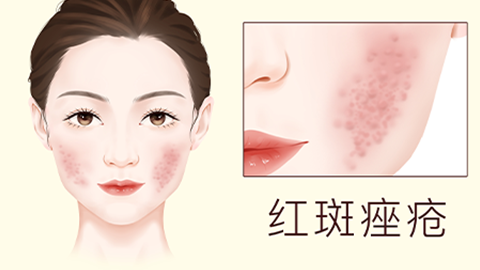How to Remove Acne
Generally, acne may be caused by unhealthy lifestyle habits, excessive stress, overactive sebaceous glands, abnormal follicular keratinization, and Propionibacterium acnes infection. A detailed analysis is as follows:

1. Unhealthy lifestyle habits
High-sugar diets and staying up late can affect the levels of insulin-like growth factor, thereby stimulating sebaceous gland secretion. Moreover, substances such as nicotine and carbon monoxide in cigarettes can impair the skin's barrier function, worsening acne. This may also be accompanied by symptoms such as fatigue and reduced immunity. It is recommended to adjust lifestyle habits, ensure adequate sleep, quit smoking, limit alcohol consumption, maintain a balanced diet, and reduce intake of high-sugar foods.
2. Excessive stress
Stress can increase the secretion of adrenal corticosteroids, indirectly stimulating sebaceous gland secretion and increasing the risk of acne. It may also be accompanied by symptoms such as anxiety and insomnia. Relaxation techniques such as deep breathing, yoga, and meditation can help reduce stress. If necessary, seeking assistance from a psychological counselor is also recommended.
3. Overactive sebaceous glands
During puberty or periods of hormonal fluctuations, sebaceous glands may become excessively active, potentially leading to excess sebum production. When this sebum mixes with shed keratinocytes, it can block the hair follicle opening, forming a comedone. When these blocked pores become infected with bacteria, inflammatory acne develops. This may also be accompanied by symptoms such as rough skin texture and clogged pores. Treatment under a physician's guidance may include medications such as benzocaine compound gel, spironolactone tablets, and ethinylestradiol cyproterone acetate tablets.
4. Abnormal follicular keratinization
Abnormal keratinization of the hair follicles prevents keratinocytes from shedding normally. When these cells mix with sebum, they can block pores, creating an environment conducive to the growth of acne-causing bacteria. This may also be accompanied by symptoms such as rough skin texture and clogged pores. Treatment under a physician's guidance may include medications such as salicylic acid ointment, urea ointment, and mometasone furoate cream.
5. Propionibacterium acnes infection
Propionibacterium acnes uses sebum within blocked pores as nourishment, producing fatty acids that irritate the skin and cause inflammation, resulting in red, swollen pimples. This may also be accompanied by symptoms such as redness, pain, and pus-filled pimples. Treatment under a physician's guidance may include medications such as clindamycin phosphate gel, erythromycin ethylsuccinate tablets, and tetracycline tablets.
In daily life, patients should avoid squeezing acne to prevent worsening inflammation, bacterial spread, or the formation of acne scars and pits. Maintaining healthy lifestyle habits and a positive mindset is also important.








